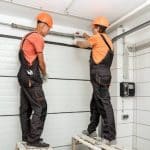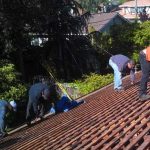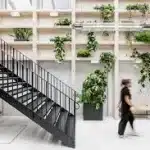Old buildings hold stories in their walls. Their bricks whisper tales of another time and architecture evokes nostalgia. But time is cruel. Rain eats mortar, Sun fades paint, and pollution taints beauty. So, what do we do with these aging treasures?
We retrofit, upgrade, and modernise.
But here’s the twist—we do not erase. We protect their essence and honour their identity with suitable architectural cladding. But how can we retrofit an old structure with new cladding without snuffing out its spirit?
Let us delve into it and understand.
First, Respect the Bones
Every old building has bones—Strong, gritty, stubborn bones. They deserve respect. So, do not rush in with tools and panels. Step back, observe, and study.
What style is it? Is it Victorian? Federation? Georgian? Each has distinct traits.
- Ornate cornices.
- Tall sash windows.
- Decorative brickwork.
Preservation starts with understanding. A retrofit must not bulldoze these features. It must embrace them like a costume tailored to fit, not to hide.
Use Materials That Echo the Past
Material choice is not just technical. It is poetic. The wrong material can shout over the building’s original voice. The right one can harmonise.
Stone cladding can mirror sandstone heritage. Timber panels can echo old weatherboards. Brick slips can mimic traditional brickwork. Even modern composites, when textured properly, can play the part.
Aim for synergy, not contrast. Choose finishes that nod to the past. Pick colours found in aged masonry. Look for materials with patina potential. That aged, weathered charm is not a flaw. It is a feature.
Prioritise Reversible Design
Permanence can be a problem. What if your retrofit is flawed? What if tastes change again in 30 years? What if future architects want to undo your work?
Design reversibly.
- Use systems that can be removed.
- Avoid adhesives and methods that scar.
- Bolt-on cladding systems allow for easy removal.
- Mechanical fixings give flexibility.
Let your design be a layer, not a tattoo.
Celebrate Contrast (But Tread Lightly)
Sometimes, the best way to highlight an old building is to contrast it. Sharp metal against crumbling brick. Sleek glass against rugged sandstone. But this is dangerous ground.
Clashing can feel bold, but it can also feel violent. Strive for balance. Let the cladding play a supporting role. Let the old structure be the lead actor. Use contrast like a spotlight—not a steamroller.
When in doubt, tone it down. Let texture speak louder than colour.
Mind the Details
Cladding is not just a surface. It touches edges, wraps corners, and meets windows. Detailing matters. Mismatched trims can ruin a façade. Bad flashing can invite water damage. Sloppy joins can cheapen the entire look.
So, study how the building breathes. Understand its quirks. Where does it leak? Where does it crack? Tailor the cladding to suit. Not the other way around.
Work with Heritage Experts
Heritage architects and conservationists exist for a reason. Use and learn from them. They see what others miss—A tiny arch detail, a rare brick pattern, or a louvre vent from a specific era.
Involving experts early avoids mistakes. They can also help with approvals. Many old buildings fall under heritage listings. These come with legal limits. Get advice before you lift a hammer.
Consider Hybrid Solutions
Not every inch needs cladding. Sometimes, partial retrofits work best, such as:
- Clad the rear.
- Preserve the front.
- Update one façade but leave another untouched.
- Use glass to bridge old and new.
- Use metal panels on extensions only.
Let the main structure stay true, while mixing and matching thoughtfully.
Hybrid approaches allow experimentation. They also reduce costs. More importantly, they create dialogue and tell a story of evolution.
Prioritise Breathability and Performance
Old walls were built to breathe, not sealed tight. They handle moisture differently. Covering them with impermeable cladding can trap moisture, leading to decay, rot, and mould. Instead:
- Use breathable systems.
- Add ventilation cavities.
- Choose vapour-permeable membranes.
- Understand building science.
Retrofitting is not just cosmetic. It should improve thermal performance and enhance energy efficiency. But it should never be at the expense of the health of the building or its inhabitants.
Honour the Surroundings
Buildings do not exist in isolation. They sit within streetscapes within neighbourhoods. They form skylines and rhythm. Your cladding should respond to that. Look around. What materials are common nearby? What colours? What styles?
Let your retrofit be a conversation with the context, not a monologue. Do not let your building shout “Look at me!” in a street that whispers.
Respect the flow and enhance it. Extend the language of the neighbourhood. A retrofit can uplift a whole block when done with care.
Tell a Story Through Cladding
Every surface can speak. So, use it to tell the building’s journey.
- Use reclaimed materials.
- Use etchings.
- Use subtle patterns that hint at history.
Some projects embed old date stamps into panels, while others laser-etch maps or photographs. You can be as creative and reverent as you want.
Let the cladding honour what came before. Let it record what is happening now. Let it leave room for the future.
Conclusion
Retrofitting is an act of humility. You are not the first to touch this building. You will not be the last. You are a chapter in its story. So, study before you strip, sketch before you screw, and think before you clad.
For a deeper discussion on your preferred architectural cladding, consider connecting with Claddco. Your buildings deserve that respect.







